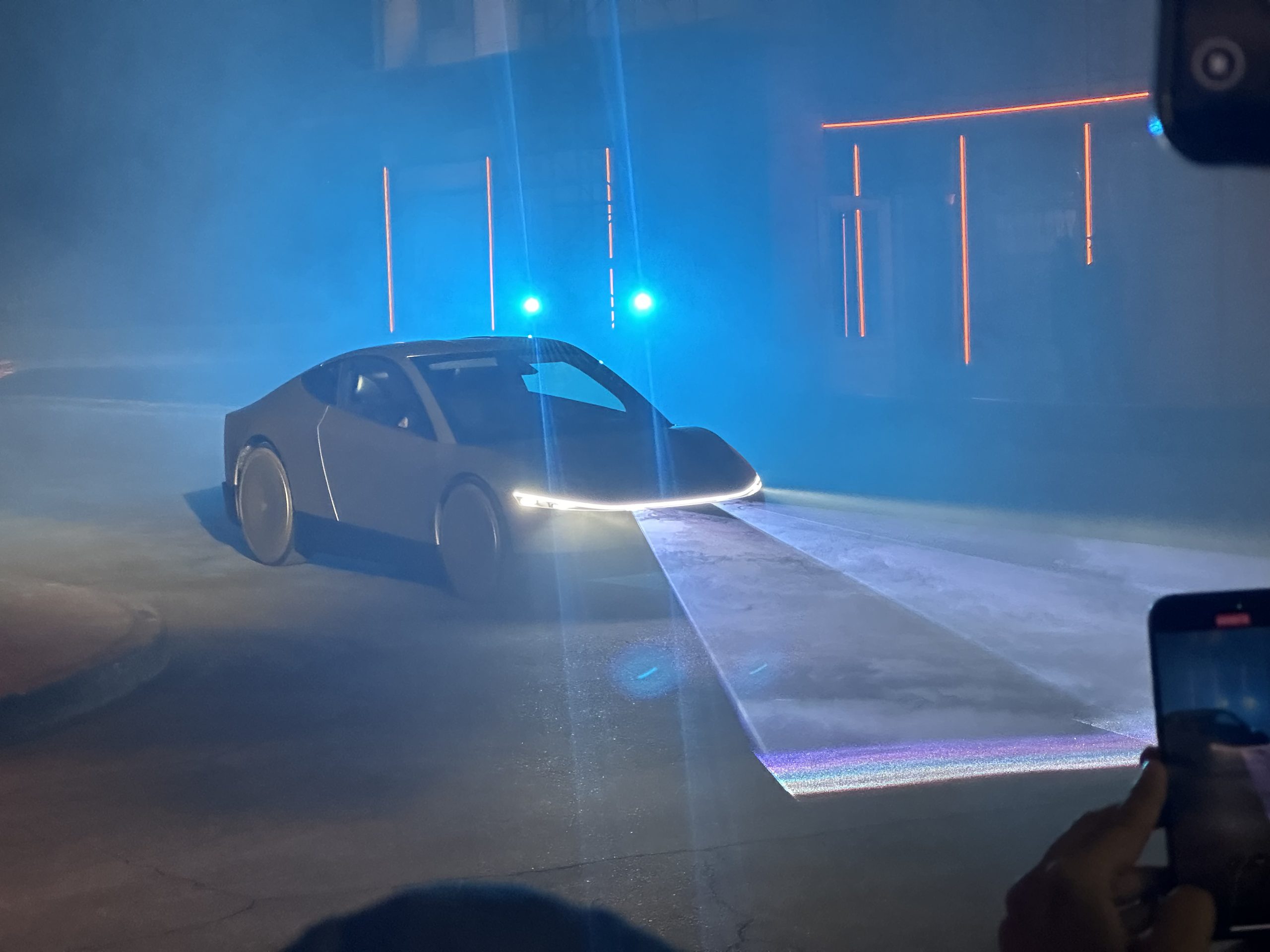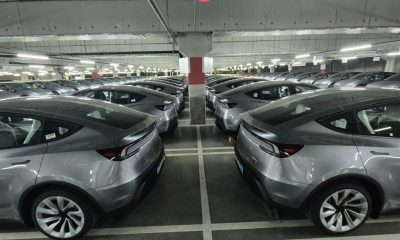Tesla and other companies are actively developing self-driving technologies and driverless ride-hailing platforms, and with President-elect Donald Trump’s transition team already focused on autonomous vehicles, the tech is highly expected to be a major theme in 2025.
According to a Reuters Breakingviews prediction report on Monday, Trump’s moves to minimize regulations surrounding autonomous vehicles and create a federal framework for the technology are expected to supercharge the industry—as increased competition emerges in the U.S. and beyond.
With Tesla CEO Elon Musk also set to play a large role in Trump’s administration, heading up the Department of Government Efficiency (DOGE), the company’s own developments in the sector could also stand to benefit substantially. Reuters also predicts that self-driving pilots could expand under the administration, especially as developers aim to increase the amount of data used to train their systems.
READ MORE ON SELF-DRIVING REGULATIONS: U.S. agency proposes rules for self-driving vehicle incident reporting
Last month, the Trump transition team said that it was already aiming to create a federal self-driving vehicle framework. Additionally, the team earlier this month was reported to be ditching federal requirements on automated driving tech crash reporting, coming as one example of the administration’s aims to streamline regulatory processes in the industry.
Internationally, the Society of Automotive Engineers (SAE) categorizes vehicle automation into five automation levels, which are generally adopted in conversations about robotaxis in the U.S. market as well. You can see these categories below, with Level 3 and above generally considered to be full automation, at least at times, while Level 2 and below are considered partial automation.
Credit: SAE International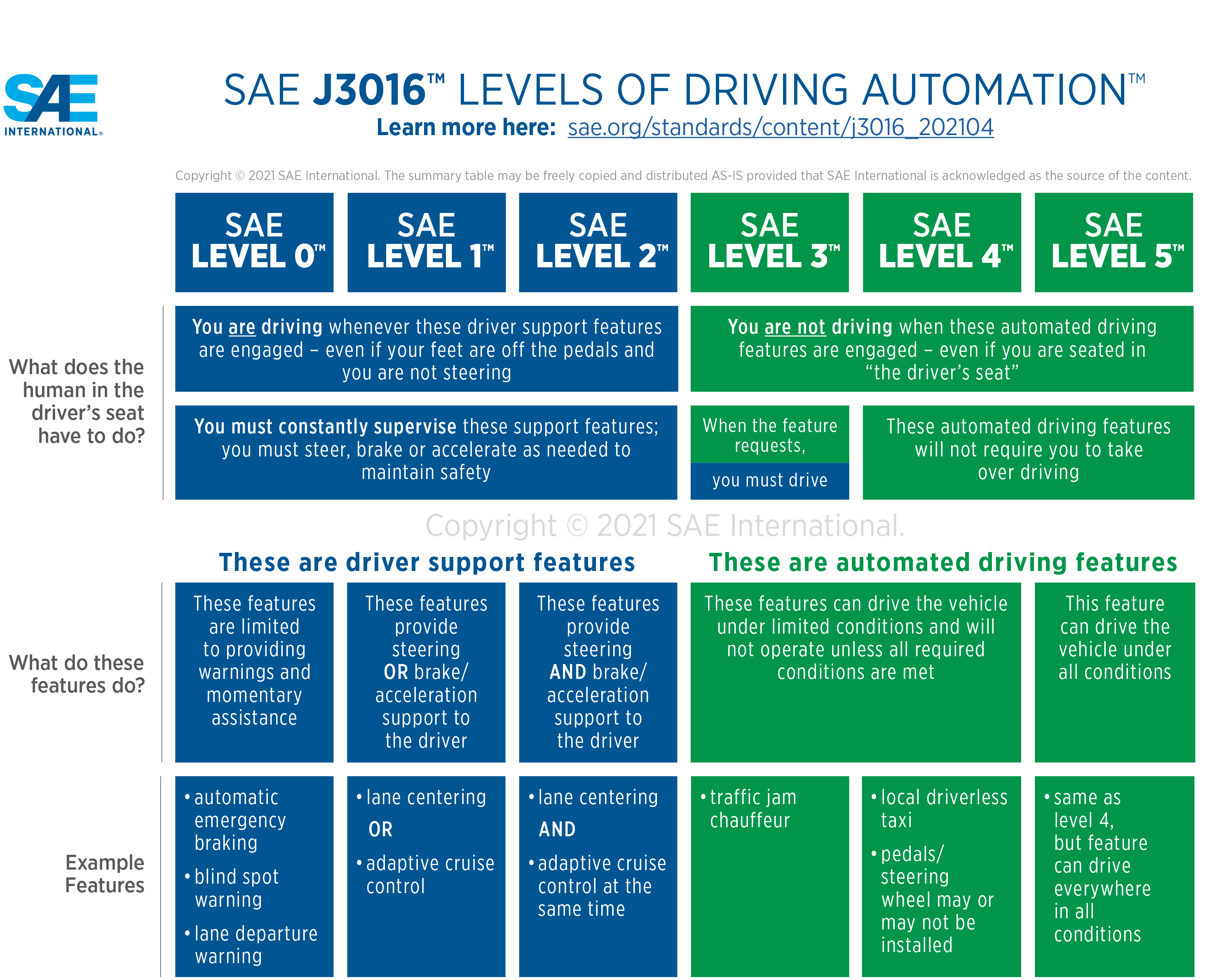
According to the data firm Canalys, just 5.5 percent of vehicles sold this year have included Level 2 or more assistance features, such as cruise control and automated lane changes. By 2025, however, Citi research has suggested that models in China below 200,000 yuan (about $28,000) will have these features, playing a major role in consumer demand.
In China, at least 19 companies are currently testing fully autonomous vehicles, and Goldman Sachs expects the country to see as many as 90 percent of consumer sales to have features of Level 3 autonomy or greaterby 2040, compared to just 65 percent in the U.S.
While these technologies are emerging, McKinsey predicts that self-driving could become a $400 billion industry by 2035. Google parent company Alphabet runs Waymo, a Level 4 driverless ride-hailing service that already offers paid rides, while others, including Pony AI and Baidu also offer rentable self-driving vehicles in select areas.
BYD has invested $14 billion into self-driving, Toyota has around 1.7 trillion yen ($11.3 billion) going toward software, while Volkswagen has invested $700 million into China’s Xpeng Motors. Li Auto and Xiami are also considered potential competitors in these spaces, and 2025 could prove a big year for commercial self-driving hopefuls.
Tesla’s Supervised FSD program, Cybercab unveiled
Meanwhile, Tesla isn’t yet operating a paid ride-hailing service, though it gathers data through owner use of its Supervised Full Self-Driving (FSD) software. Tesla has touted the potential scalability of its Supervised FSD in the past, given that it’s available at least in some form in all of the company’s vehicles.
Musk has also regularly talked about a future in which owners of its vehicles could use an Unsupervised FSD to generate money by giving robotaxi rides while not normally in use.
On that theme, Tesla unveiled the Cybercab in October, a fully autonomous, two-seat vehicle with no pedals, set to eventually make it to the market as a driverless ride-hailing vehicle. It’s also set to be equipped with wireless charging and make use of an automated cleaning robot, offering top-to-bottom autonomy for owners.
MORE ON FSD SUPERVISED: Watch Tesla’s FSD v13.2 navigate away from park in a tricky situation
Tesla skeptics, Waymo’s driverless ride-hails, GM’s Cruise drives into the sunset
Despite the unveiling, some have shared skepticism around how long the vehicles could take to reach the market, especially given that production isn’t set to begin until 2026 with commercial deliveries aiming for “before 2027,” according to Musk during the October 10 “We, Robot” unveiling event.
On Monday, analyst Gary Black also predicted that fewer than 50 percent of Tesla owners would join the company’s robotaxi fleet, while a Guggenheim researcher in October said Tesla was “extremely unlikely” to reveal a credible path to robotaxi commercialization in the next 12 to 24 months.
Others like Waymo are some of the first companies operating paid driverless ride-hails, and the Google-run firm said in August that its robotaxis were already giving 100,000 paid self-driving rides per week. Meanwhile, General Motors (GM) announced this month that it will officially end funding for its commercial self-driving arm Cruise, after one of the company’s driverless vehicles last year ran over and pinned a pedestrian in San Francisco.
ALSO RELATED:
- Tesla China FSD approval expected by end of 2024: Musk
- Waymo to test self-driving vehicles in another country in 2025
What are your thoughts? Let me know at zach@teslarati.com, find me on X at @zacharyvisconti, or send us tips at tips@teslarati.com.
California regulators add new reporting requirements for self-driving cars
Need accessories for your Tesla? Check out the Teslarati Marketplace:
News
Volkswagen teams with Uber for robotaxi service with the ID. Buzz
Volkswagen and Uber team up to launch a driverless ID. Buzz robotaxi fleet in U.S. cities. Testing starts in LA this year.

Volkswagen of America and Uber unveiled a plan to launch a commercial robotaxi service using autonomous electric ID. Buzz vehicles across U.S. cities over the next decade. The partnership marks a significant step for Volkswagen’s autonomous vehicle ambitions, leveraging Uber’s ride-hailing expertise.
The service will debut in Los Angeles by late 2026, with human safety operators initially overseeing the fleet before transitioning to fully driverless operations in 2027. Volkswagen ADMT, the German automaker’s autonomous subsidiary, will begin testing in Los Angeles later this year upon securing a testing permit from the California Department of Motor Vehicles. The California Public Utilities Commission will oversee permits for the commercial ride-hailing phase.
“Volkswagen is not just a car manufacturer — we are shaping the future of mobility, and our collaboration with Uber accelerates that vision,” said Christian Senger, CEO of Volkswagen Autonomous Mobility. “What really sets us apart is our ability to combine the best of both worlds–high-volume manufacturing expertise with cutting-edge technology and a deep understanding of urban mobility needs.”
The Trump administration’s recent policy shift, announced last Thursday by Transportation Secretary Sean Duffy, supports initiatives like VW and Uber’s partnerships by easing federal safety rules and crash reporting requirements on autonomous vehicle development. According to Duffy, the United States government wants to outpace Chinese competitors in autonomous vehicle development.
Volkswagen ADMT, which launched publicly in July 2023, has been testing 10 ID. Buzz vehicles equipped with Mobileye’s autonomous technology in Austin, reported TechCrunch. Two years ago, Volkswagen focused on selling self-driving vans and fleet management software rather than building its own ride-hailing service. VW’s strategy toward autonomous vehicles appears to have shifted, as reflected in its Uber partnership.
Uber will strengthen its autonomous vehicle portfolio through its partnership with Volkswagen. The ride-hailing service company has secured deals with over 14 firms, including Waymo in Austin and a forthcoming launch in Atlanta.
The Volkswagen-Uber collaboration positions both companies to capitalize on the growing robotaxi market. With testing imminent and regulatory support increasing, the ID. Buzz fleet could redefine urban mobility, blending Volkswagen’s manufacturing prowess with Uber’s ride-hailing network to compete in the evolving autonomous vehicle landscape.
News
These automakers are pushing to overturn California’s gas car ban
This lobbying group represents Detroit’s Big Three automakers, as well as several others selling vehicles in the U.S.
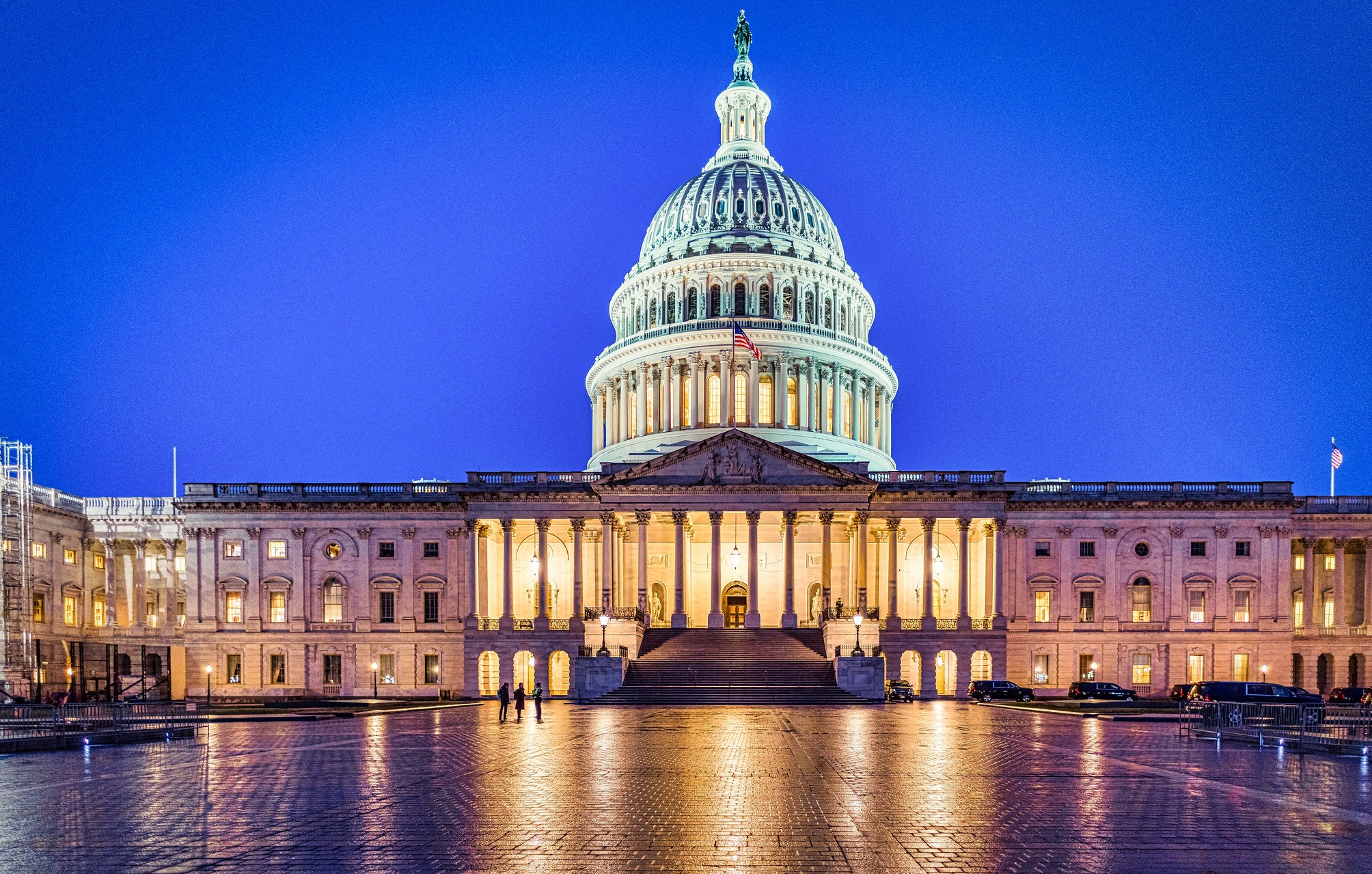
A lobbying group made up of several automakers is pushing Congress to ban California’s plan to phase out and ban new gas car sales altogether by 2035, ahead of a vote that could also affect the 11 other states that have followed with similar plans.
The Alliance for Automotive Innovation (AAI), an organization representing the interests of Ford, General Motors (GM), Stellantis, Toyota, Volkswagen, Hyundai, and several others, recently sent a letter to Congress requesting that it overturn a waiver granted to California letting it set its own emissions rules.
Later this week, the U.S. House of Representatives will vote on overturning the waiver granted to California under the 1968 Clean Air Act to impose the tightened standards, according to Reuters. In the previous letter, the AAI argued to Congress that automakers would be “forced to substantially reduce the number of overall vehicles for sale to inflate their proportion of electric vehicle sales,” adding that it would also boost prices and reduce competition in the market.
The waiver, enacted under the Biden administration’s Environmental Protection Agency (EPA), allows California to mandate at least 80 percent electric vehicle sales by 2035 under the Clean Air Act. The passage of disapproval of the waiver is being ushered under the Congressional Review Act, and an initial vote in the House of Representatives is set to take place on Wednesday.
READ MORE ON STATE EMISSIONS RULES: Tesla could face emissions credit tax in Washington
The U.S. Court of Appeals for the District of Columbia backed the EPA’s decision to grant the waiver last April, following a challenge from 17 Republican-run states. The group claimed that California was being given unconstitutional regulatory power in the decision, adding that other states didn’t have those same powers.
In December, the U.S. Supreme Court agreed to hear out bids from Valero, the AAI, and other groups to oppose the 2035 California gas car sales ban, which would begin phasing them out in 2026 if the waiver remains in place.
You can see the full list of members of the AAI below, including automakers and a handful of other tech companies.
Companies represented by the Alliance for Automotive Innovation (AAI)
Here’s the full list of AAI members, according to the lobbying group’s website:
- AESC
- AISIN
- Aptiv
- Autoliv
- BMW Group
- Bosch
- Denso
- Emergency Safety Solutions
- Ferrari
- Ford
- GM
- Harman
- Honda
- Hyundai
- InEos Automotive
- Infineon
- Isuzu
- Jaguar-Land Rover
- Kia
- LG
- Luminar
- Magna
- Mazda
- McLaren
- Mercedes-Benz
- Mitsubishi Motors
- Nissan
- Nuro
- Panasonic
- Porsche
- Qualcomm
- RV Industry Association
- Samsung
- SiriusXM
- SK On
- Stellantis
- Subaru
- Texas Instruments
- Toyota
- Uber
- VinFast
- Volkswagen
- Volvo
- Zoox
California proposal to allow self-driving tests for heavy-duty trucks
News
Neuralink’s third brain chip patient shares first video edited with BCI
The third Neuralink brain chip patient is the trial’s first patient with ALS and its first non-verbal patient, and he has detailed his experience regaining speech and more.
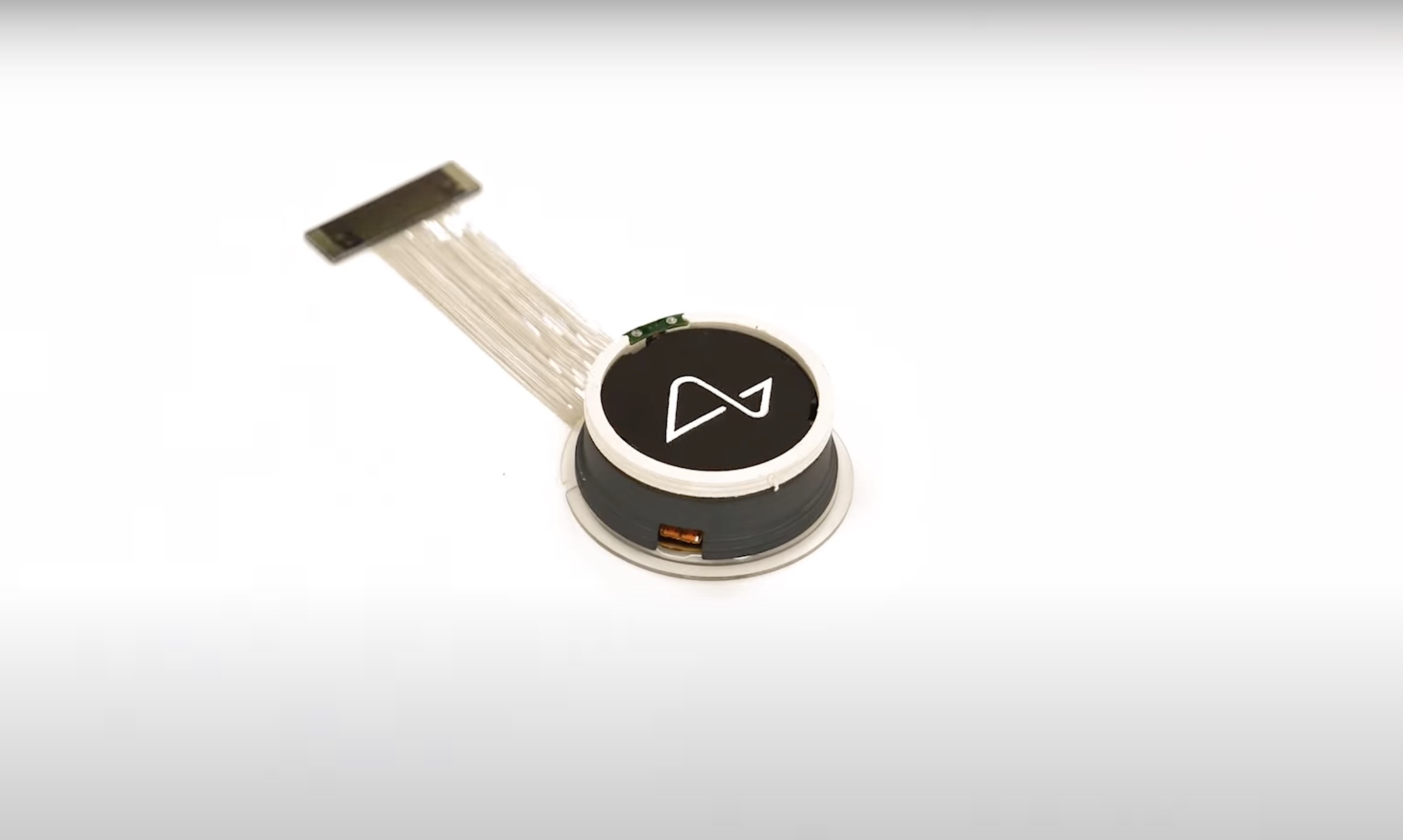
Elon Musk’s Neuralink has officially installed its brain-chip interface (BCI) into a third human patient, and the individual shared a video this week detailing his experiences gaining control of external devices and regaining the ability to talk through the use of AI.
On Monday, X user Bradford G Smith shared a video detailing his experience as the third person in the world to receive the Neuralink BCI, and as the first non-verbal patient and the first with Amyotrophic Lateral Sclerosis (ALS) to receive the implant. In the video, Smith details how the BCI works, how it’s less limiting than his previous eye tracker technology, and how it has literally helped him regain his voice through AI.
“I am typing this with my brain,” Smith wrote. “It is my primary communication.”
The video, which he says is the first edited directly with a BCI, is narrated by an AI-generated version of his old voice. Prior to the BCI, he was also unable to leave the house using his eye tracker, as it made it difficult to communicate unless he was in dark or low-light settings.
The video also shows how he’s able to connect with external devices using the BCI, with a live shots of him controlling his computer using a cursor.
You can see the full update below, which runs a little under 10 minutes.
READ MORE ON NEURALINK: Elon Musk: over 1,000 humans with Neuralink implants in 2026 is feasible
The news follows Neuralink’s initial update with Brad and other initial BCI patients, as was shared in a post on the company’s website in February. In it, Brad also explained how groundbreaking it was to be able to communicate outside and see his son win a robotics award, along with being able to consider leaving the city area for the first time in half a decade:
The most significant thing that happened this week will sound strange to you: I got to use the computer on the porch, and it worked!!
I went to [my child’s] soccer game, and the referee thought I was sleeping. I was actually able to talk outside. I [am] actually thinking about traveling outside the [city] metro [for] the first time in 5 years.
Both of Neuralink’s studies focus on restoring autonomy to people who are paraplegic through the use of external devices. The company gained initial approval from the U.S. Food and Drug Administration (FDA) to install the first BCI in a human patient in May 2023, with Noland Arbaugh being the first, a patient named Alex being the second, and Brad being the third.
Neuralink opened its Patient Registry worldwide earlier this month, allowing participants to submit to take part in the company’s initial PRIME and CONVOY studies. The firm also announced plans to operate the PRIME study out of a second location in Miami, Florida in January, after an initial location was launched in Phoenix, Arizona.
Last week, it was reported by Bloomberg that Neuralink is currently targeting a $500 million funding round at a valuation of $8.5 billion. Meanwhile, Neuralink has also been constructing office buildings near Austin, Texas, which initially aimed to be completed in May 2025.
-

 News1 week ago
News1 week agoTesla’s Hollywood Diner is finally getting close to opening
-

 Elon Musk2 weeks ago
Elon Musk2 weeks agoTesla doubles down on Robotaxi launch date, putting a big bet on its timeline
-

 News4 days ago
News4 days agoTesla is trying to make a statement with its Q2 delivery numbers
-

 News2 weeks ago
News2 weeks agoTesla’s top investor questions ahead of the Q1 2025 earnings call
-

 News2 weeks ago
News2 weeks agoUnderrated Tesla safety feature recognized by China Automotive Research Institute
-

 News2 weeks ago
News2 weeks agoTesla reveals its Q1 Supercharger voting winners, opens next round
-

 News2 weeks ago
News2 weeks agoTesla police fleet saves nearly half a million in upkeep and repair costs
-

 Investor's Corner7 days ago
Investor's Corner7 days agoLIVE BLOG: Tesla (TSLA) Q1 2025 Company Update and earnings call

